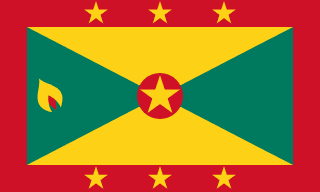Grenada Travel Guide: Essential Tips
Explore Grenada: From the Underwater Sculpture Park to Spicemas

The 15 Most Searched Questions About Grenada
1. What is the capital of Grenada?
The capital of Grenada is St. George’s, home to 40,000 people and known for its picturesque harbor and colonial architecture.
2. Do I need a visa to visit Grenada?
Citizens of the EU, US, and Canada don’t need a visa for stays up to 3 months. More details in our Documents tab.
3. What currency does Grenada use?
Grenada uses the Eastern Caribbean Dollar (XCD). More details in our Currency tab.
4. Is Grenada safe for tourists?
Grenada is generally safe for tourists, but petty theft occurs in St. George’s – avoid isolated areas at night. More details in our Safety tab.
5. What languages are spoken in Grenada?
English is the official language; Grenadian Creole English and French Patois are also spoken.
6. What is Grenada known for?
Grenada is known as the “Spice Isle” for its nutmeg production, the Underwater Sculpture Park, and Spicemas. More details in our Top Attractions tab.
7. What’s the best time to visit Grenada?
The dry season (January to April) is ideal, with temperatures of 25-30°C; the wet season (June to December) brings rain but fewer crowds.
8. Is it expensive to visit Grenada?
Grenada is moderately priced – a daily budget of $120-$200 covers most expenses, though budget options exist.
9. Can I drink tap water in Grenada?
Tap water is generally safe in St. George’s, but bottled water ($1-$2 per liter) is recommended in rural areas.
10. What are some must-visit places in Grenada?
Must-visits include the Underwater Sculpture Park, Grand Anse Beach, and Annandale Falls. More details in our Top Attractions tab.
11. How’s the climate in Grenada?
Grenada has a tropical climate: the dry season (January to April) is sunny at 25-30°C; the wet season (June to December) brings rain and humidity.
12. Are there festivals in Grenada?
Yes, Spicemas in August is a major draw with vibrant parades; the Grenada Chocolate Festival in May celebrates local cocoa.
13. What souvenirs should I buy in Grenada?
Popular souvenirs include nutmeg products, local chocolate, and handcrafted jewelry.
14. How do I get around in Grenada?
Minibuses in St. George’s cost $1-$2 per ride; renting a car costs $40-$70 per day.
15. What traditional dishes should I try in Grenada?
Try oil down, crab back, and nutmeg ice cream. More details in our Local Cuisine tab.
About Grenada
Grenada, known as the “Spice Isle,” is a Caribbean nation spanning 344 square kilometers, located 160 kilometers north of Venezuela. St. George’s, the capital, houses 40,000 people—about 35% of the total population of 115,000 (2023 estimate). The population is predominantly of African descent, with European and Indigenous influences from its colonial past. English is the official language, though Grenadian Creole English and French Patois are widely spoken. Visa requirements are lenient: citizens of the EU, US, and Canada don’t need a visa for stays up to 3 months; other nationalities may need to apply through a consulate, with overstays incurring fines of $20 per week. In 2023, Grenada welcomed 180,000 tourists, drawn by its nutmeg plantations, pristine beaches, and cultural festivals. Tourism contributes $300 million annually to the economy, alongside agriculture (notably nutmeg and cocoa) and fishing. The climate is tropical: the dry season (January to April) averages 25-30°C, while the wet season (June to December) brings rain and occasional hurricanes. Budget travelers can manage on $120-$200 per day, with a local meal costing $5-$8 and a coffee $1-$3; upscale dining in St. George’s can cost $15-$30 per person. Public transport includes minibuses in St. George’s ($1-$2 per ride) and taxis ($8-$15 per trip); car rentals cost $40-$70 per day. Cultural events like Spicemas in August feature vibrant parades, while the Grenada Chocolate Festival in May celebrates local cocoa. Grenada’s history includes Carib and Arawak inhabitants, French and British colonization, and independence in 1974. Known for its Underwater Sculpture Park, Grand Anse Beach, and the aroma of spices, Grenada offers a rich, authentic Caribbean experience for travelers.
Visa & Passport for Grenada: Entry Requirements for Travelers
- Passport Requirements: Your passport must be valid for at least 6 months beyond your entry date into Grenada and have at least one blank page for stamps. Children need their own passport; they cannot travel on a parent’s.
- Visa Requirements: Citizens of the EU, US, and Canada don’t need a visa for stays up to 3 months. Other nationalities may need a visa—apply through a Grenadian consulate. Overstays incur fines of $20 per week, payable on departure.
- Other Requirements: Proof of onward travel and sufficient funds (e.g., $40 per day) may be requested by immigration. Travel insurance covering medical emergencies is recommended due to limited healthcare facilities in rural areas.
Driving in Grenada: Traffic Rules & Tips for Tourists
- Driver’s License: An International Driving Permit (IDP) is recommended alongside your national license, and a local driving permit ($12) is required. Car rentals start at $40-$70 per day; a 4x4 is useful for hilly roads near Gouyave.
- Traffic Rules: Drive on the left side of the road. Speed limits are 40 km/h in towns and 60 km/h on highways. Seat belts are mandatory, and the legal blood alcohol limit is 0.05%—fines for violations start at $40.
- Road Conditions: Roads in St. George’s are paved but narrow; rural roads near Gouyave can be steep—drive cautiously, especially during the wet season.
- Transport: Minibuses in St. George’s cost $1-$2 per ride. Taxis are widely available but pricey—$8-$15 for short trips.
- Emergency Number: Dial 911 for police or medical emergencies.
Currency in Grenada: Using the Eastern Caribbean Dollar for Your Trip
- Eastern Caribbean Dollar (XCD): The official currency, shared with other OECS countries. The exchange rate is fixed at 2.7 XCD to 1 USD (as of May 2025).
- Money Exchange: Exchange money at banks or official bureaus in St. George’s—avoid street vendors due to scams. ATMs are available in tourist areas but may have fees.
- Payment Methods: Cards are accepted in resorts and major restaurants in St. George’s, but cash is preferred in rural areas. Small vendors often prefer XCD, though USD is sometimes accepted.
- Costs: A local meal costs $5-$8, a coffee $1-$3, and a souvenir like nutmeg products costs $3-$10.
Legal Guide to Grenada: Laws Travelers Should Know
- Local Laws: Public drinking is allowed on beaches but restricted in towns—fines start at $25. Marijuana use is illegal—possession can lead to fines of $50 or jail time.
- Cultural Sensitivities: Respect local customs, especially during Spicemas—ask permission before taking photos of performers. More details in the Culture & Etiquette tab.
- Photography Restrictions: Avoid photographing government buildings—fines start at $25. Always ask permission when photographing locals, especially at cultural events.
- Public Behavior: Public nudity, including topless sunbathing, is illegal—fines start at $40. Littering carries fines of $15-$30.
- Customs Rules: You can bring up to 1 liter of alcohol and 200 cigarettes duty-free. Declare cash over $10,000—currency controls are enforced.
- Emergency Contact: Dial 911 for police or medical emergencies.
Travel Safety in Grenada: Staying Safe During Your Trip
- Crime: Grenada is generally safe for tourists, but petty theft occurs in St. George’s—avoid isolated areas at night and don’t flash valuables.
- Road Safety: Roads in St. George’s are narrow; rural roads near Gouyave are steep—use a 4x4 for rugged terrain. Taxis cost $8-$15 but are safer than minibuses in remote areas.
- Health Risks: Tap water is safe in St. George’s, but use bottled water in rural areas. Dengue is a risk during the wet season—use mosquito repellent.
- Natural Hazards: The wet season (June to December) can bring heavy rain and hurricanes—check weather updates. Landslides are possible in hilly areas.
- Outdoor Safety: Swimming at Grand Anse Beach can have strong currents—follow lifeguard advice. Sunburn is a risk; use SPF 30+.
- Medical Facilities: Grenada General Hospital in St. George’s is recommended for emergencies, but facilities in rural areas are limited—bring necessary medications.
- Emergency Contacts: Dial 911 for police or medical emergencies. The US Embassy in Grenada can be reached at +1 473 444-1173.
Culture & Etiquette in Grenada: What to Know
- Greetings: A handshake or a friendly “Hello” is common; locals may say “Good morning” or “Good afternoon.” Address elders respectfully with “Mr.” or “Ms.”
- Dining Customs: Tipping is expected—10-15% in restaurants. Meals are often communal; sharing food is common during festivals like Spicemas.
- Community Respect: Grenadians value politeness—avoid confrontational behavior. Dress modestly outside tourist areas, especially in rural communities.
- Festivals: Spicemas in August features colorful parades and soca music. The Grenada Chocolate Festival in May celebrates local cocoa production.
- Language Tips: English is widely spoken; learning Creole phrases like “Wah gwan” (What’s going on) is appreciated.
- Social Practices: Grenadians are warm and laid-back—being on time isn’t strict for social events; arriving 15-30 minutes late is normal.
Local Cuisine in Grenada: Dishes & Drinks to Try
- Oil Down: The national dish, a stew with breadfruit, coconut milk, and salted meat—$5-$8.
- Crab Back: Seasoned crab meat baked in its shell—$6-$10.
- Nutmeg Ice Cream: A unique dessert flavored with local nutmeg—$2-$4.
- Rivers Rum: A strong, locally distilled rum—$3-$5 per shot.
- Carib Beer: A refreshing local lager—$2-$3.
- Where to Eat: In St. George’s, BB’s Crabback serves crab back with harbor views, a highlight in our Top Attractions tab. In Gouyave, try oil down at a local fish fry.
Top Attractions in Grenada: Must-Visit Places
- Underwater Sculpture Park (Molinère Bay): A unique snorkeling site with submerged sculptures. Search for tours on Tiqets.
- Grand Anse Beach (St. George’s): A 3-km stretch of white sand, perfect for swimming. Search for tours on Tiqets.
- Annandale Falls (St. George): A scenic waterfall surrounded by lush forest. Search for tours on Tiqets.
- Gouyave Nutmeg Processing Station (Gouyave): A working factory showcasing Grenada’s spice industry. Search for tours on Tiqets.
- Fort George (St. George’s): A historic fort with panoramic views of the capital. Search for tours on Tiqets.
- Belmont Estate (St. Patrick): A cocoa plantation offering tours and chocolate tastings. Search for tours on Tiqets.
- Where to Eat: In St. George’s, BB’s Crabback offers crab back with harbor views. In Gouyave, the weekly fish fry serves oil down in a lively atmosphere.
Flights to Grenada: Travel Options
Maurice Bishop International Airport (GND) in St. George’s is the main gateway, with flights from Miami, New York, and London. A taxi from GND to Grand Anse costs $10-$15 and takes 15 minutes.
Create Your Packing List for Grenada
Travel Tips for Grenada
- Connectivity: LIME or Digicel SIM cards offer 5-10 GB for $10-$15, available at the airport. Wi-Fi is reliable in St. George’s but spotty in rural areas—download offline maps.
- Health Prep: No mandatory vaccinations, but dengue is a risk in the wet season—bring mosquito repellent. Check for hurricane alerts during June to December.
- Weather Prep: Pack light, breathable clothing for the tropical climate (25-30°C year-round). Include rain gear for the wet season (June to December) and snorkeling gear for the Underwater Sculpture Park.
- Navigation: Use Google Maps in St. George’s—offline maps are key for rural areas. Minibuses ($1-$2) are affordable; car rentals cost $40-$70 per day.
- Peak Season: Spicemas in August draws crowds to St. George’s—book accommodations early to avoid rates hitting $150 per night.
